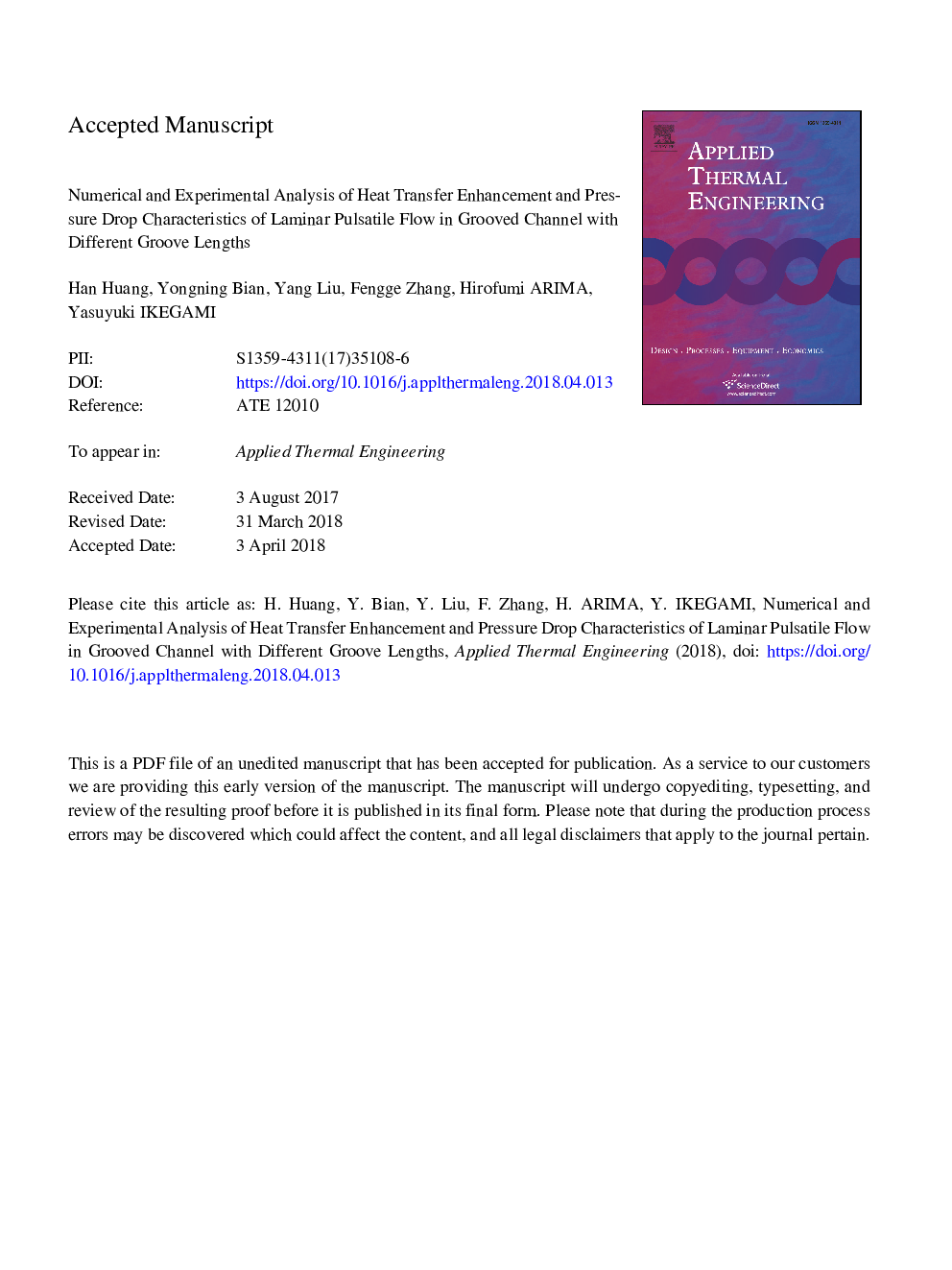| Article ID | Journal | Published Year | Pages | File Type |
|---|---|---|---|---|
| 7045484 | Applied Thermal Engineering | 2018 | 22 Pages |
Abstract
Heat transfer enhancement and pressure drop characteristics of laminar pulsatile flow in grooved channel with different grooved lengths are investigated numerically and experimentally in the present work. The Reynolds number of the mainstream flow considered in this work ranges from 300 to 525. Two dimensional simulations are carried out to reveal the flow and heat transfer features. The numerical results demonstrate that heat transfer is enhanced in the grooved channel when the pulsatile flow is at high oscillatory fraction and a moderate frequency. It is also found that the heat transfer is improved the most in the grooved channel of lâ¯=â¯1.6, which is by approximately 4.74% at a Reynolds number of 300. Furthermore, five types of grooved channels are tested in experiment where the pressure drop is measured by an electro-magnetic flow-meter. The sampling data of pressure drop is analyzed by the amplitude and mean value. Both the numerical and experimental results indicate that the grooved channel of lâ¯=â¯1.6 performs better in terms of heat transfer enhancement while the amplitude of pressure drop and mean pressure drop in lâ¯=â¯1.6 are relatively lower than other grooved channels studied. Meanwhile, it is revealed that the heat transfer improves with the oscillatory fraction at low oscillatory frequency.
Related Topics
Physical Sciences and Engineering
Chemical Engineering
Fluid Flow and Transfer Processes
Authors
Han Huang, Yongning Bian, Yang Liu, Fengge Zhang, Hirofumi Arima, Yasuyuki Ikegami,
